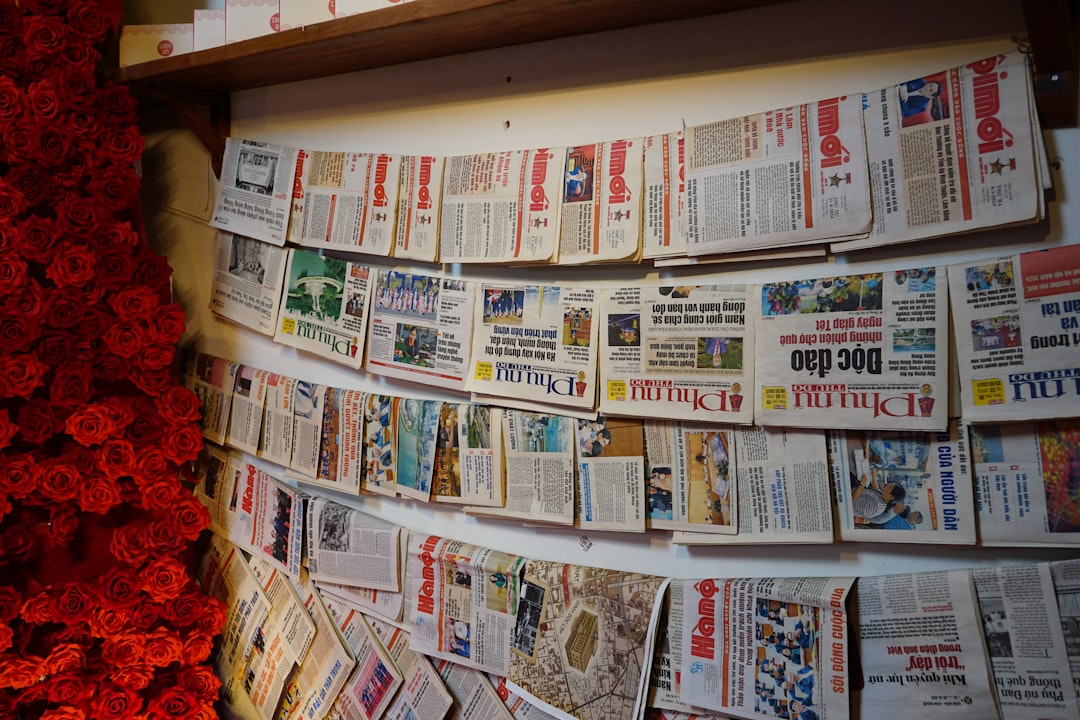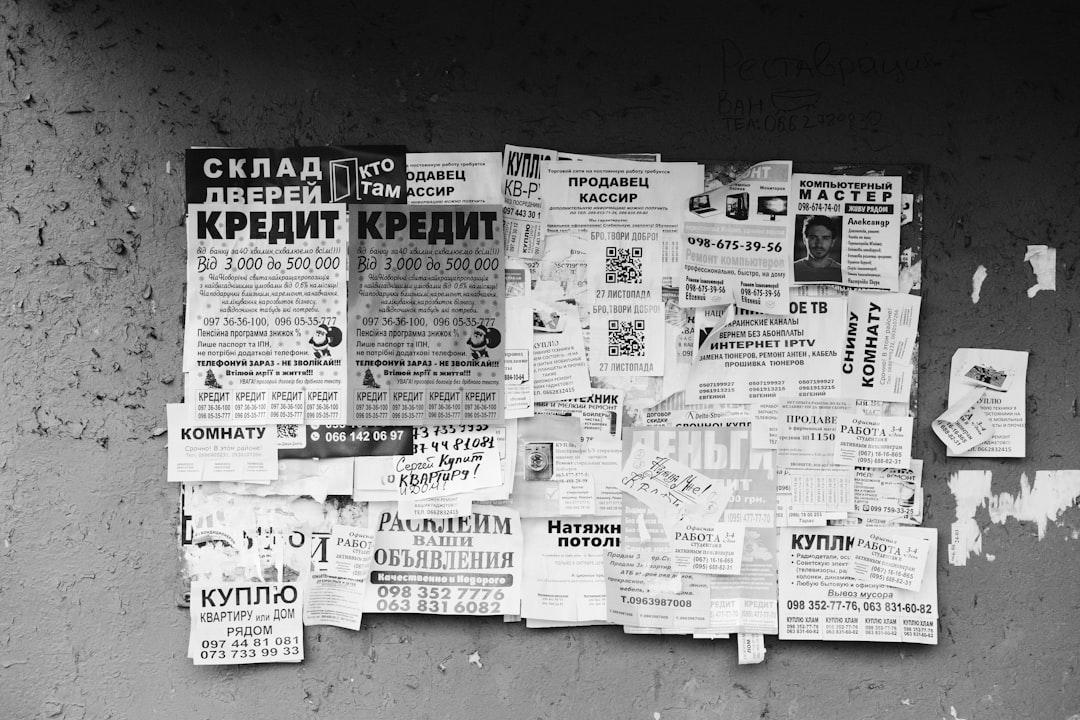

Engage prospects with a scan and streamline customer engagement with FREE QR code marketing tools by Sona – no strings attached!
Create a Free QR CodeFree consultation

No commitment

Engage prospects with a scan and streamline customer engagement with FREE QR code marketing tools by Sona – no strings attached!
Create a Free QR CodeFree consultation

No commitment
Newspaper syndicates are facing a critical juncture, where bridging the legacy of print with the realities of digital engagement is no longer optional. As audiences diversify their reading habits and advertisers push for proof of ROI, syndicates often experience untraced engagement, missed high-value prospects, and opaque attribution. The once-reliable model of print distribution and broad demographic targeting now exposes gaps, particularly when anonymous readers engage but never convert, with no mechanism to surface interest that does not translate into a form fill or subscription.
QR codes have emerged as a strategic lever for newspaper syndicates determined to address these gaps by enabling every print impression to drive digital action, capture intent data, and make even formerly invisible traffic fully trackable. By embedding QR codes across editorial features, advertiser supplements, or subscription forms, syndicates provide readers seamless entry points to richer experiences, turning unknown print audiences into qualified, measurable digital leads.
This article explores how QR codes can help newspaper syndicates overcome core challenges such as missing high-value prospects, losing track of anonymous interest, and struggling to attribute print campaigns to revenue. Discover how QR codes illuminate pathways from print to purchase, empower data-driven revenue planning, and position newspaper syndicates for thriving, multi-channel futures.

A core frustration for syndicates today is watching premium print real estate generate strong reader interest, but failing to convert it into actionable data or leads. QR codes provide a direct bridge, transforming static content into measurable engagement points that reveal exactly which readers are ready to act. When deployed thoughtfully, they also streamline experiences that used to rely on inconvenient mail-ins, call centers, or long URLs that few readers type on mobile.
To get started, align your QR strategy with a specific business goal such as subscription growth, advertiser ROI, or event attendance. Map each physical placement to a digital destination that reduces friction and encourages the next step. Then define how you will measure success so you can refine the program with every issue. Explore Sona QR’s use case library for campaign ideas.
Digital integration with modern tools automates QR generation, passes scan data directly to subscriber or advertiser CRMs, and allows syndicates to continually refine tactics. Platforms like Sona QR make it easy to manage thousands of codes, update destinations after print, and unify analytics so missed revenue from untracked audiences becomes a relic of the past. Start creating QR codes for free.

Declining print readership, an intensifying need for digital analytics, and advertiser pressure to prove campaign effectiveness all expose pain points for newspaper syndicates. The inability to capture and act on anonymous traffic means many promising leads evaporate unnoticed, and legacy marketing often falls short on accountability. QR codes offer a practical way to convert attention into action, while generating the data required to justify spend and optimize content, as shown in QR in ads. For measurement frameworks, see Sona’s blog post First-touch vs last-touch attribution models.
The typical newspaper portfolio includes weekly features, premium magazines, inserts, and regional editions. Each is an opportunity to let readers move directly from curiosity to conversion. Where a URL might be ignored, a QR capture can happen in seconds during a morning commute or coffee break. When activated with clear value, QR codes can meaningfully increase the share of readers who surface themselves as known subscribers or qualified prospects.

Syndicates routinely confront the challenge of engaging diverse audiences, each with unique preferences and channels. By selecting formats that match the intent of the placement, you can maximize response while gathering precise first-party data. Modern QR platforms let you configure each code’s behavior in minutes and manage it across multiple editions and partners.
For newspapers, the most practical formats tend to be those that shorten the path to content, lead capture, or follow-up. Consider a mix of evergreen codes for long-lived pieces and dynamic codes for campaigns that require updates or testing.
Modern QR management platforms such as Sona QR support static and dynamic formats, short links, and enterprise governance. They also allow you to tag each code by section, edition, and advertiser to simplify analysis and retargeting.

As syndicates diversify their touchpoints, many struggle to tie specific outreach to engagement or revenue. QR codes make these moments measurable, revealing channels that were previously under-monetized or ignored. By prioritizing placements where attention is highest, you can capture intent signals that drive both subscription growth and advertiser performance.
Think beyond the paper. Anywhere a reader encounters your brand is a potential conversion surface. Treat every moment of contact as a chance to move someone from awareness to action with a single scan.
QR codes excel when a clearly defined next step exists. For syndicates, that often means connecting loyal print readers to digital experiences where they can subscribe, interact with sponsors, or engage with events. Each use case should include a concise call to action and a mobile-first destination.
Across each use case, QR codes resolve long-standing friction between interest and action. They convert passive readership and anonymous engagement into active, attributable participation that syndicates and advertisers can nurture over time.
The inability to surface intent signals or connect touchpoints often leads to missed upsell and cross-sell opportunities. QR scans offer a robust mechanism to identify, track, and nurture both new and existing audiences. By designing a taxonomy for your codes, you can automatically build segments that reflect reader interests and lifecycle stages. For tactics, see Sona’s Playbook Intent-driven retargeting.
Use the context of the scan to guide the next interaction. A reader who scans a sports feature needs different follow-up than someone who scans a subscription invoice. Over time, these distinctions compound to boost conversion and retention.
This audience-first approach converts real-world interest into actionable retargeting and upsell opportunities. The result is lower churn, more relevant advertiser targeting, and stronger lifetime value across your readership.
Siloed marketing efforts create duplicated work and missed demand. QR codes can unify print, digital, and event experiences, fostering engagement that is both trackable and repeatable across all touchpoints. With a connected strategy, every code becomes a signal that improves the next message readers see.
Map your funnel across channels and place a code at each step that makes the preferred action easy. Use consistent tags and UTMs to link scans to campaigns across paid social, newsletters, and on-site behavior.
Centralized QR management gives syndicates the ability to assess, iterate, and optimize campaigns in one dashboard. Tools like Sona QR and Sona.com help unify these signals, power retargeting, and attribute revenue, so future strategy is shaped by hard data rather than guesswork.
Start by defining a concrete business outcome and the audience you want to influence. Identify the friction that a QR code can remove such as a long URL, a paper form, or an unclear next step. Frame the campaign with a benefit-driven CTA that matches reader motivation.
Choose static codes for fixed, evergreen destinations and dynamic codes for campaigns that need updates, auditing, or detailed analytics. Dynamic codes let you route traffic by geography or date, run experiments, and update URLs without reprinting. Learn more about the Sona QR platform.
Great creative and rigorous testing significantly improve scan rate and usability. Make the code visually inviting and the call to action unmistakable.
Distribute codes where attention is highest and intent is strongest. Do not bury them in cluttered areas or low-contrast backgrounds.
Plan your analytics before launch so you can act on insights quickly. Use tags and UTMs consistently and set up dashboards that connect scans to outcomes.

Attribution blind spots and the inability to link print actions to sales outcomes have long been persistent headaches for newspaper syndicates. QR code analytics offer a transparent path from first scan to closed deal. By treating scans as the start of a measurable journey, you can judge which assets create real commercial impact, not just awareness.
A robust analytics stack should connect scans to web sessions, form fills, sales pipeline, and revenue. With identity resolution and CRM sync, you can attribute subscriptions, advertiser deals, and event registrations to the print placements that initiated them.
Sona QR captures the scan-level data and unifies placements, while Sona.com enriches identity and attributes revenue with multi-touch models. Together, they give syndicates an end-to-end view that turns QR programs into performance channels.
Successful QR programs evolve as you learn which placements and messages resonate. Codify your playbook, teach your teams, and automate the follow-up that turns one scan into an ongoing relationship. Focus on actions you can take issue by issue to increase scan rates and conversions.
Use these high-impact tactics to accelerate results while keeping operations manageable across multiple editions and partners.
Real-world programs demonstrate how even small changes in placement and messaging can drive meaningful outcomes. The following ideas translate across markets and syndicate portfolios, and they can be implemented with minimal disruption to existing workflows.
Treat each example as a template that can be repurposed by section, sponsor, or season. Track results closely, then adapt the next cycle based on what the data reveals.
Experience shows that small execution details can make or break a QR program. Avoid the common mistakes that suppress scan rates and undercut data quality, and lean into best practices that consistently raise performance. Build a simple checklist for editors and designers so codes are placed and presented correctly in every edition.
Expect results to improve as you iterate. Use dynamic codes to test CTAs, content types, and incentives. Share wins internally to drive adoption across desks and teams.
QR codes are redefining how newspaper syndicates connect audiences with advertisers, transforming every print surface into a trackable, convertible touchpoint and resolving the persistent challenges of missed prospects, invisible engagement, and hard-to-prove ROI. By harnessing QR-driven data and integrating real-time tracking with multi-channel strategy, syndicates can move from guessing to knowing, building high-value, retargetable audiences while providing advertisers and editorial teams the transparency they have long demanded. With the right tactics and the support of advanced QR platforms like Sona QR and Sona.com, newspaper syndicates are now positioned to secure their relevance, boost revenue, and deliver measurable impact across the evolving media landscape.
QR codes have revolutionized newspaper syndicates by transforming traditional print into interactive, measurable engagement channels. They empower publishers to drive subscriber acquisition, enhance reader experiences, and generate actionable insights from every scan. Imagine knowing exactly which syndicated articles or ads inspire reader action—and instantly optimizing your campaigns for maximum impact.
With Sona QR, creating dynamic, trackable QR codes tailored for newspaper syndicates is effortless. Update campaigns on the fly without costly reprints, connect scans directly to subscription conversions, and unlock data that turns print readership into measurable revenue. No missed opportunities—just smarter, more effective syndication strategies.
Start for free with Sona QR today and turn every QR code scan into a loyal subscriber, a valuable lead, or a profitable conversion.
Newspaper syndicates can embed QR codes in editorial features, advertiser supplements, and subscription forms to provide readers seamless entry points to richer digital experiences, turning unknown print audiences into qualified, measurable digital leads.
Incorporating QR codes helps syndicates convert anonymous print readers into trackable digital leads, enables real-time campaign optimization, supports dynamic content updates, provides complete tracking for ROI measurement, and offers a cost-effective way to scale engagement across multiple editions.
QR codes drive sales by reducing friction for readers to take action, such as subscribing, redeeming offers, or engaging with advertisers, while enabling syndicates to track conversions, attribute revenue to specific print placements, and nurture high-intent prospects through personalized follow-up.
Best practices include aligning QR codes with clear business goals, placing them in high-visibility locations with benefit-driven calls to action, using sufficient size and contrast, testing scan functionality across devices, deploying dynamic codes for flexible updates, and integrating scan data with CRM systems for ongoing engagement.
Syndicates can track effectiveness by capturing detailed scan data such as time, location, and device, monitoring scan volumes and conversion rates, using dynamic QR code analytics for real-time adjustments, syncing data with CRM platforms, and attributing revenue to specific print campaigns using multi-touch attribution models.
Use Sona QR's trackable codes to improve customer acquisition and engagement today.
Create Your FREE Trackable QR Code in SecondsJoin results-focused teams combining Sona Platform automation with advanced Google Ads strategies to scale lead generation

Connect your existing CRM

Free Account Enrichment

No setup fees
No commitment required

Free consultation

Get a custom Google Ads roadmap for your business






Launch campaigns that generate qualified leads in 30 days or less.
